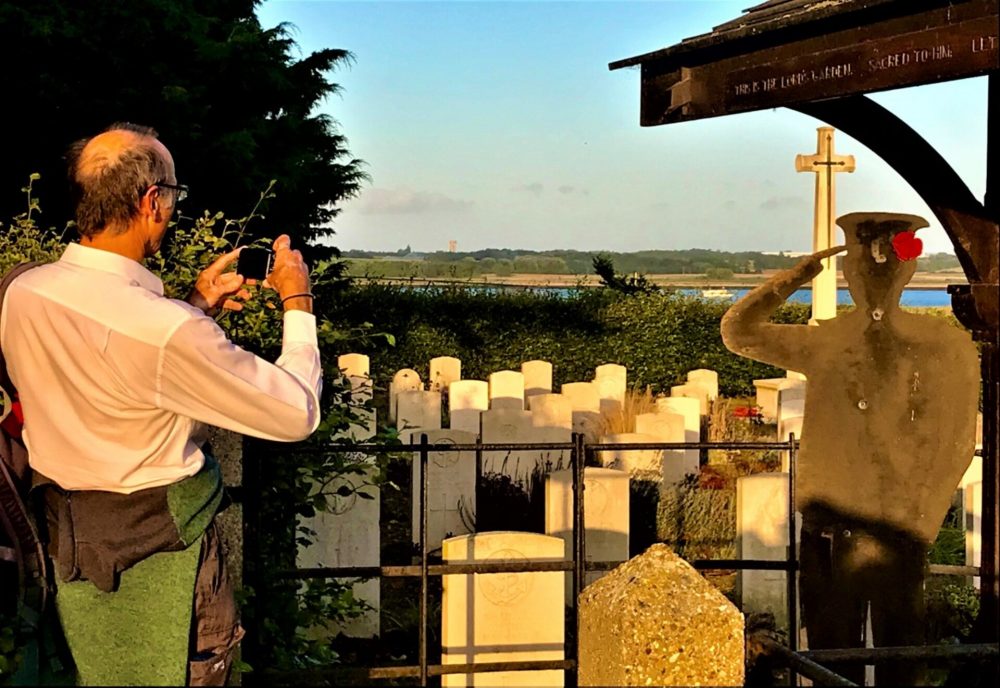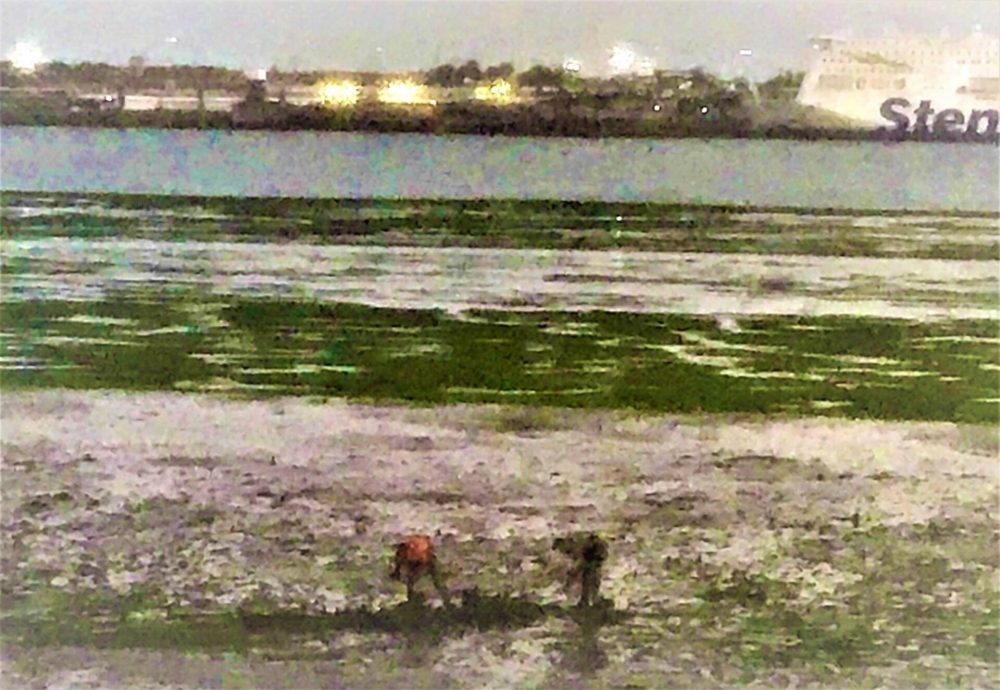Text and photos by Patrick Meehan
In a different epoch – perhaps as a member of an indigenous tribe on the Great Plains of North America – he might have been called Chingatsaway, which might have meant He Who Chases the Sun. In this current epoch however, he is known to queen and country as Ian Robinson, and much like Glen, Christina, Sally, Sarah and Simon, Ian is an IOG walk leader who regularly takes IOG members out and away from the torpor of deep sofas, hum-drum TV and chores that can wait.
Nomenclature aside, Ian has been doing just that these past several weeks – chasing the sun – and mainly on Friday evenings, in an attempt to make the most of the dwindling daylight hours as the seasons are pulled inexorably towards colder temperatures and shorter daylight hours. In his pre-walk emails, Ian had emphasised an on-time 6:10pm departure from the Bristol Arms pub at Shotley Gate, promising a goodly pace in order to cover the six-mile hike in about two hours twenty. His suggestion to bring a torch in case we didn’t make it back to the pub before total darkness certainly brought the message home.
From our departure point at the pub, we rounded Shotley Point – where the Rivers Orwell and Stour meet – and headed due north. The insistent wind was also from the north and, although it lacked an icy bite, it was strong enough to set the flagpoles on the yachts in Shotley Marina flapping like marching bands of banging kettles, and forceful enough to stifle conversations on the causeway as it barrelled over our ears like a train through a tunnel.
The slanting evening sunshine cast long shadows, illuminating the great commercial heart that is the Port of Felixstowe in a spectacularly clear light, where ocean-going container vessels were effortlessly loaded and unloaded by the giant cranes that so dominate the port landscape – and which, for some, are reminiscent of the Martian ships in Wells’ The War of the Worlds.
The knifing cries of the curlews announced their presence on the shoreline as they, together with other wading birds, took advantage of the ebbing tide to feed on the flats. It was as if they were shouting back at the wind, determined not to be outdone by the huffing and puffing of the impatient, blustering northerly.

It was at this point that Ian mentioned the Orwell estuary is of international importance for wildlife, providing habitats for nearly 50,000 over-wintering geese, wading birds and fish that are attracted by the huge numbers of invertebrates that live in the mudflats. The estuary includes extensive mudflats, low cliffs, salt marsh and small areas of vegetated shingle on the lower reaches, and is designated as a Special Protection Area (SPA), a Site of Special Scientific Interest (SSSI), and as a Ramsar site (an area designated to be of international importance for its wetland).
The wind eventually subsided when we took a sharp left turn down from the causeway past fields of grazing cattle into a long, rough meadow festooned with arrays of tall thistles, their purple flowers transformed into feathery white tassels, fine as gossamer, now set ablaze by the yellow light of the westering sun.

As our inland path continued, we took a moment to remember the fallen at the Commonwealth War Graves in St Mary Churchyard, Shotley. Then it was onward into the failing light past Shotley Vineyard; then due west for a country mile along Church Walk; then south past fields after harvest until we came to the immaculately kept Erwarton Hall, a Grade II Listed Building. https://www.commsmuseum.co.uk/dykes/ganges/burial/burial.htm
Speaking of the fallen, history tells us that Anne Boleyn, the ill-fated second wife of Henry VIII, spent happy childhood days at Erwarton. Local legend has it she so loved the place she asked for her heart to be buried there. Curiously, during renovations to the crypt at St Mary’s Church at Erwarton in 1837, a heart-shaped tin casket was discovered in the chancel wall.
Today, to the east of the main aisle in St Mary’s (Erwarton) and attached to the 1912 pipe organ – is a copy of a drawing of Anne by Hans Holbein the Younger, court Painter to Henry VIII. The note beneath the drawing tells us, “after her execution in the Tower of London, 19 May 1536, it was recorded that her heart was buried in this church [beneath the pipe organ] by her Uncle, Sir Philip Parker of Erwarton Hall”. In 2014, the churchwarden at St Mary’s said she believed the doomed queen’s heart had made it back to the village she so loved in life.
Continuing our roaming in the gloaming, we were now heading south towards the River Stour as the light gradually leached from the landscape.

Following Chingatsaway into the final stretch of our race against the dark, we eventually reached the Shotley Stour Footpath along the foreshore. By now, the moon’s inhalations had drawn the tide well out, and as it held its breath, we could see that two men had ventured far out onto the mudflats to dig for bait. Behind them, long lines of samphire-green seaweed led to the waterline – and to the lights of Parkeston Quay beyond on the far side of the Stour, where a Stena Line ferry nestled at anchor, dreaming of the morning’s departure. In the waning light, the scene took on the appearance of a Constable watercolour – a technique the artist favoured after 1829 when he used opaque pigments and thicker brushes to convey atmospheric changes in his beloved Suffolk skies.
By 8:45pm, all of Ian’s charges were also comfortably and safely nestled at anchor in the Bristol Arms pub, dreaming of the long weekend to come. And all agreed that the walk had been a fine, late-summer IOG adventure, and a marked success for He Who Chases the Sun. Torches were not required!
